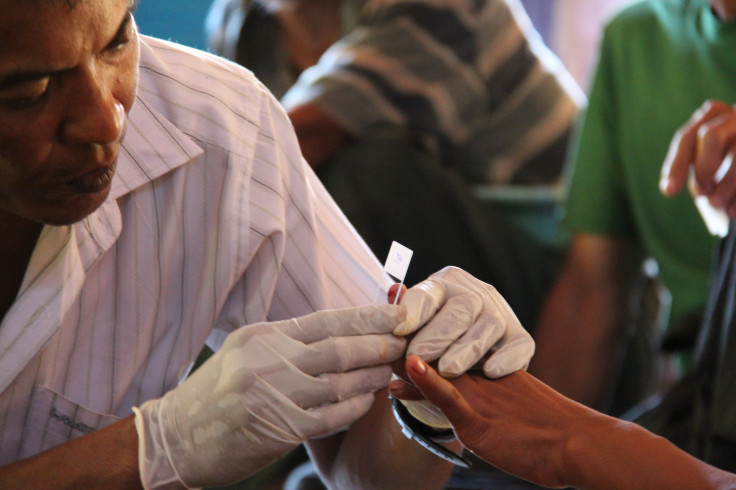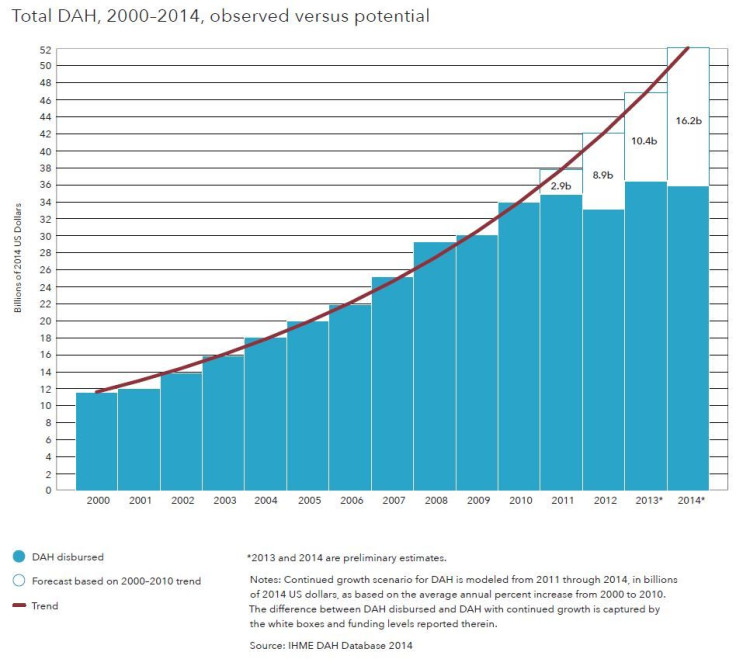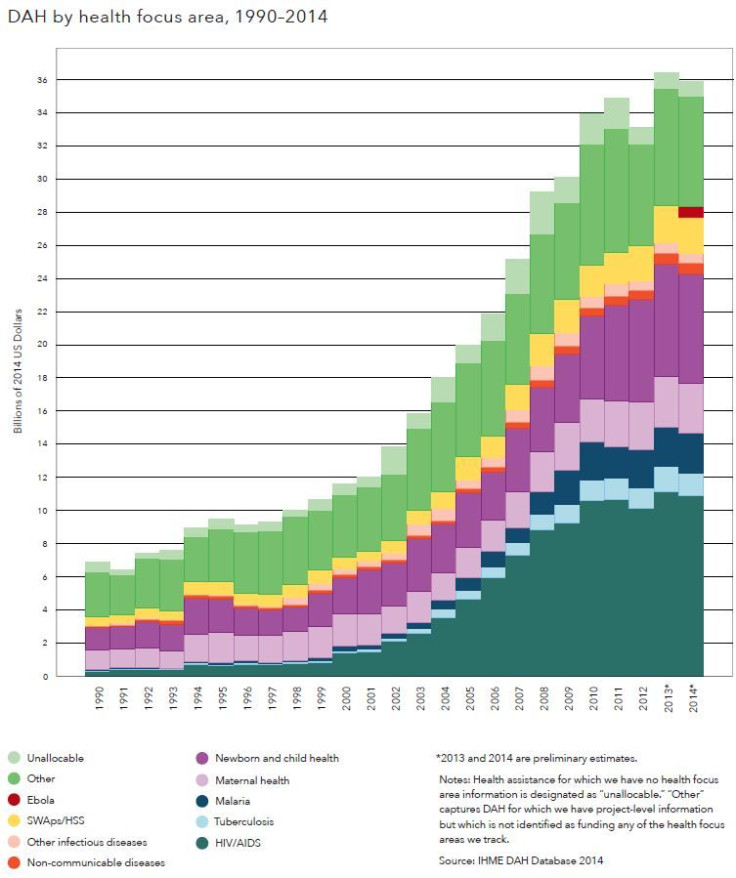The Price Of Good Health: Nations Have Spent $228 Billion On Global Health Projects In Poor Countries Over The Past 15 Years

For only the second time in 15 years, global spending on health programs in impoverished nations dropped in 2014 as compared to the year prior. This dip comes despite the fact that countries spent $1 billion to control the outbreak of Ebola last year, according to a new report by a health research center at the University of Washington. Overall, the world has donated $227.9 billion to global health projects in poor countries since 2000. For comparison, Qatar is expected to spend roughly $200 billion on preparations to host the 2022 World Cup.
The Institute for Health Metrics and Evaluation in Seattle published a report and visualization tool on Tuesday tracking trends in the amount of money the world’s governments have spent to improve the health of people in impoverished nations. The analysis shows that funding for global health grew at an annual rate of 5.4 percent in the decade prior to 2000 but jumped to 11.3 percent from 2000 to 2010.
Lately, though, the world's generosity has leveled off and begun to drop. From 2013 to 2014, the amount of funding dedicated to health projects actually decreased by 1.6 percent. Aid to improve maternal health fell 2.2. percent, and resources dedicated to tuberculosis dropped by 9.2 percent over that period.
This graph shows the total amount of money the world's countries have spent on development assistance for health (DAH), which is the amount of money given by governments around the world to health programs in low-income nations, since 2000:

Today, all the world's nations collectively provide about $35 billion a year for global health. Roughly a third of that funding goes to nations in sub-Saharan Africa, which received $11.8 billion in development assistance for public health in 2012.
The United States remains the largest donor and poured $12.4 billion into efforts to ward off AIDS and malaria in developing countries last year. The Bill & Melinda Gates Foundation gave $2.9 billion in 2014 as the largest private donor, though the organization has been criticized for investing in fast-acting medicines rather than long-lasting health systems.
Investment into global health rose sharply after the United Nations announced a series of priorities called the Millennium Development Goals in 2000. This set of eight goals was meant to focus global aid dollars on pressing issues such as providing primary education and halting the spread of AIDS by 2015. Among the priorities were to reduce child mortality, improve maternal health and stop the spread of AIDS and malaria. This attention and the subsequent funding made a real difference in some areas -- rates of malaria have dropped by 47 percent since 2000, according to the World Health Organization.
The new report also provides a stark look at the world of disease funding, in which some treatments and programs are highly favored over others. The world spent $3.2 billion on vaccines for children last year and $1.1 billion on nutrition initiatives for kids. Another $778 million went toward family-planning programs. Worldwide donations for addressing mental health and funding anti-tobacco programs paled in comparison, at $164 million and $31 million, respectively.
The graph below shows changes in development assistance for health given to address specific diseases:

© Copyright IBTimes 2024. All rights reserved.












